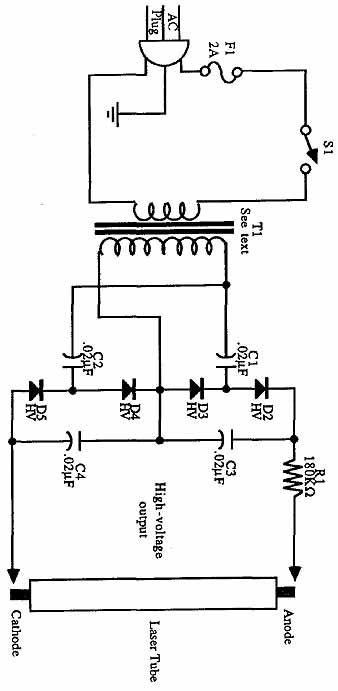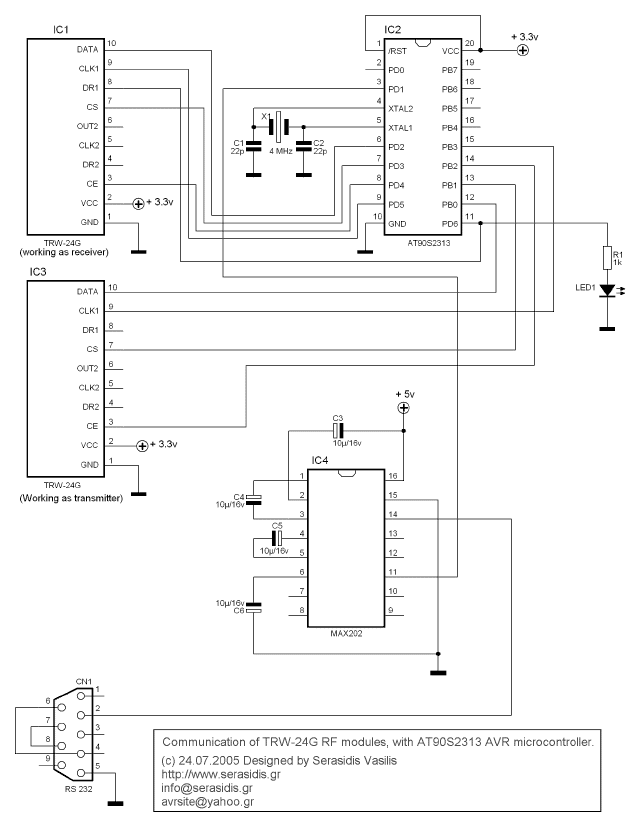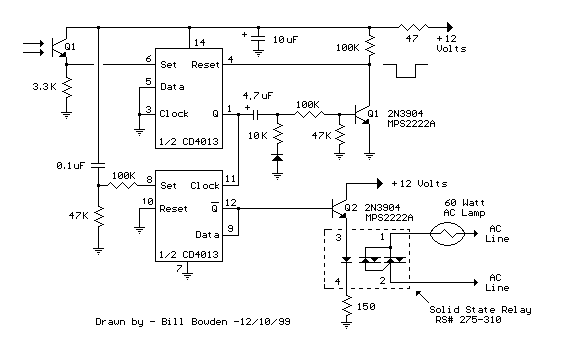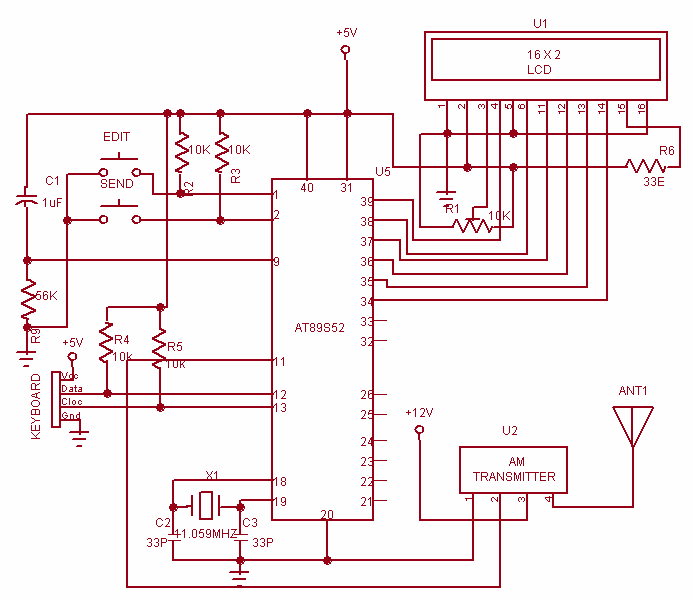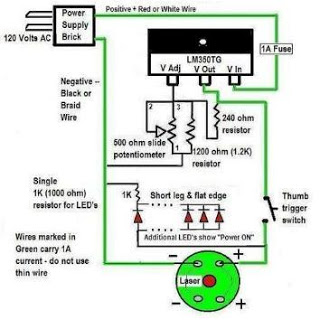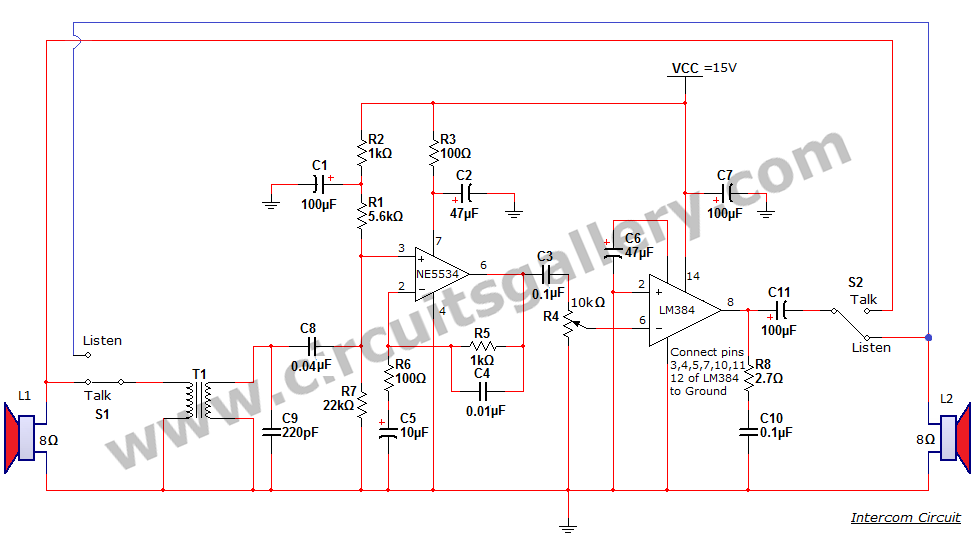
Laser Communication (Transmitter-Receiver)
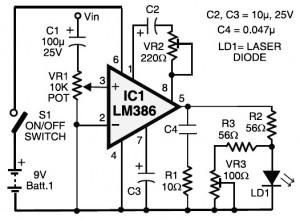
Laser communication system circuit diagram. The circuit module consists of a transmitter and a receiver that utilize the IC LM386. It is powered by a 9V battery.
The laser communication system is designed to facilitate wireless data transmission using modulated laser beams. The circuit comprises two main components: a transmitter and a receiver, both of which leverage the operational amplifier IC LM386 for signal processing.
In the transmitter section, the LM386 is configured to amplify the audio or data signals that are to be transmitted. The signal input is fed into the non-inverting terminal of the LM386, allowing for efficient amplification. The output of the LM386 is connected to a laser diode, which converts the electrical signal into a modulated light signal. A suitable lens may be employed to focus the laser beam for better transmission distance and clarity. The transmitter is powered by a 9V battery, ensuring adequate voltage for the operation of the LM386 and the laser diode.
On the receiver side, another LM386 is utilized to capture the modulated light signal. A photodiode or phototransistor is employed to convert the incoming light signal back into an electrical signal. This signal is then fed into the LM386, which amplifies it for further processing. The output of the LM386 in the receiver can be connected to a speaker or a microcontroller for data interpretation.
Overall, the laser communication system offers a compact, efficient means of transmitting data wirelessly over short distances, with the LM386 providing the necessary amplification in both the transmitter and receiver modules. The use of a 9V battery ensures portability and ease of use in various applications.Laser communication system circuit diagram. The circuit module consists of a transmitter and also a receiver which use IC LM386. It is powered by a 9V battery 🔗 External reference
The laser communication system is designed to facilitate wireless data transmission using modulated laser beams. The circuit comprises two main components: a transmitter and a receiver, both of which leverage the operational amplifier IC LM386 for signal processing.
In the transmitter section, the LM386 is configured to amplify the audio or data signals that are to be transmitted. The signal input is fed into the non-inverting terminal of the LM386, allowing for efficient amplification. The output of the LM386 is connected to a laser diode, which converts the electrical signal into a modulated light signal. A suitable lens may be employed to focus the laser beam for better transmission distance and clarity. The transmitter is powered by a 9V battery, ensuring adequate voltage for the operation of the LM386 and the laser diode.
On the receiver side, another LM386 is utilized to capture the modulated light signal. A photodiode or phototransistor is employed to convert the incoming light signal back into an electrical signal. This signal is then fed into the LM386, which amplifies it for further processing. The output of the LM386 in the receiver can be connected to a speaker or a microcontroller for data interpretation.
Overall, the laser communication system offers a compact, efficient means of transmitting data wirelessly over short distances, with the LM386 providing the necessary amplification in both the transmitter and receiver modules. The use of a 9V battery ensures portability and ease of use in various applications.Laser communication system circuit diagram. The circuit module consists of a transmitter and also a receiver which use IC LM386. It is powered by a 9V battery 🔗 External reference
Warning: include(partials/cookie-banner.php): Failed to open stream: Permission denied in /var/www/html/nextgr/view-circuit.php on line 713
Warning: include(): Failed opening 'partials/cookie-banner.php' for inclusion (include_path='.:/usr/share/php') in /var/www/html/nextgr/view-circuit.php on line 713
